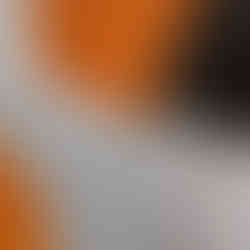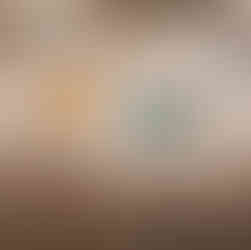GABRIEL GARCIA
- Espaço Exibicionista

- 2 de nov. de 2013
- 7 min de leitura
Atualizado: 15 de dez. de 2024
Gabriel Garcia, Ilha do Pico (Açores) em 1977. Licenciatura Artes Plásticas – Pintura, na Faculdade de Belas Artes de Lisboa. Atelier de expressão plástica de desenho e pintura, Academia das Artes de Ponta Delgada. A sua obra está representada em coleções públicas e privadas: Coleção PLMJ, PWC Portugal, EFCIS. Na arte de Gabriel Garcia vemos outros cenários, outras histórias onde se traçam as fronteiras entre a realidade e a ficção. A inquietação para uma narrativa continua, que por vezes se esvai, deixando pistas abertas para a perceção de uma passagem subsequente.
Gabriel Garcia, Ilha do Pico (Azores) in 1977. Degree in Fine Arts – Painting, at the Faculty of Fine Arts of Lisbon. Atelier of plastic expression of drawing and painting, Academia das Artes de Ponta Delgada. His work is represented in public and private collections: PLMJ Collection, PWC Portugal, EFCIS.
In Gabriel Garcia's art we see other scenarios, other stories where the boundaries between reality and fiction are drawn up. The restlessness for a continue narrative, that sometimes goes away, leaving open clues to the perception of an subsequent passage.

UM PAR DE PAUS, UMA CABANA 2022
INSIDE EE : GABRIEL GARCIA, 2022
Artist Statement Não há nada mais triunfante, do que juntar, pouco mais de um par de paus para fazer uma cabana. É como, se naquele momento, uma conquista de espaço fosse estabelecida, e com esse ato simbólico se vinque a caminhada, para cada rota pessoal. Todos temos a capacidade de percecionar, de maneira diferente, as pedras da calçada. O trilho, para uns pode ser de forma simples e do tamanho do mundo, para outros mais difícil, do tamanho de um pequeno quarto, com as inevitáveis quatro paredes.
Henry David Thoreau, escritor Americano, em 1845, construiu uma pequena cabana nas margens do lago Walden, onde passou dois anos, com o objetivo de simplificar sua vida e se dedicar à contemplação da natureza. Escreveu um clássico da literatura norte-americana “Walden, ou Vida Nas Florestas”, um roteiro da sua estadia durante aqueles dois anos passados na solidão. As descrições da natureza são exatas, porém poéticas, e as meditações filosóficas vão ao encontro misticismo. Por vezes, era tão bom exercer as nossas capacidades de bricolage, e com um par de paus construir uma semelhante cabana. Passar então para o ato de refletir sobre o estado da natureza a que chegámos, seja o planeta físico ao qual pertencemos, bem como, a realidade na qual a sociedade tem “des-voluído”.
Por mais evoluído que seja o nosso percurso, com o natural sentido que se possa caracterizar, os retrocessos civilizacionais são, inevitavelmente, um facto presente, que descredibiliza os maiores sucessos do Homem e, pau que nasce torto, tendencialmente não se endireita. Gosto do paralelo da nossa sociedade como uma colmeia, cheia de abelhas, fervorosas na sua atividade. A competição é severa, e a geografia da própria colmeia é já um labirinto demasiado povoado, e na incapacidade da solidão, as encruzilhadas são inevitáveis. Começam então as divergências, de carácter e de comportamento. Tarde demais! A caixa de Pandora foi aberta, agora, ervas daninhas crescem desgovernadas à sua volta. A rainha vive agora numa cortina de segurança com a sua guarda pretoriana, que avança sem razão contra tudo e contra todos.
De tantas citações de Henry David Thoreau, deixo duas: As coisas não mudam, nós é que mudamos... Se um homem marcha com um passo diferente do dos seus companheiros, é porque ouve outro tambor.
Podemos ver claramente isto? Será importante passar a ponte, para o lago quase seco, com um céu carregado, presságio de dilúvio, e com a devida distância, protegido por um teto de colmo, assegurar a nossa capacidade de refletir sobre o que nos rodeia e reequilibrar a valiosa balança da razão?
Basta seguir a Luz do farol, mesmo sobre a cerrada bruma da manhã.
There is nothing more triumphant than putting together little more than a pair of sticks to make a hut. It’s like, at that moment, the achievement of space was established, and with this symbolic act the walk is creased, for each personal route. We all have the ability to perceive paving stones differently. The trail, for some can be simple and from the size of the world, while for others more difficult, from the size of a small room with the inevitable four walls.
Henry David Thoreau, American writer, in 1845, built a small cabin on the shores of Lake Walden, where he spent two years, with the aim of simplifying his life and dedicating himself to the contemplation of nature. He wrote a classic of American literature “Walden, or Life in the Forests”, a script of his stay during those two years spent in solitude. The descriptions of nature are exact but poetic, and the philosophical meditations meet mysticism.
Sometimes it was so nice to exercise our DIY skills, and with a couple of sticks build a similar hut. Then move on to the act of reflecting on the state of nature that we have reached, whether the physical planet to which we belong, as well as the reality in which society has “de-voluted”.
No matter how evolved our path may be, with the natural meaning that can be characterized, civilizational setbacks are inevitably a present fact, which discredits Man's greatest successes, and a stick that is born crooked tends not to straighten. I like the parallel of our society as a hive, full of bees, fervent in their activity. Competition is severe, and the geography of the hive itself is already an overpopulated labyrinth, and in the inability of solitude, crossroads are inevitable. Then starts the differences of character and behavior. Too late! Pandora's box has been opened, now weeds grow wild around it. The queen now lives in a curtain of security with her praetorian guard, who advance without reason against everything and everyone.
Of the many quotes by Henry David Thoreau, I leave two: Things don't change, we change... If a man marches with a different step from his companions, it’s because he hears another drum.
Can we see this clearly? It will be important to cross the bridge, to the almost dry lake, with a heavy sky, omen of a deluge, and with the right distance, protected by a thatched roof, to ensure our ability to reflect on our surroundings and rebalance the valuable balance of reason?
Just follow the lighthouse light, even in the thick morning mist.
QUEM ATIRA A PRIMEIRA PEDRA, 2020
A grande epifania é quando temos um assunto que queremos tratar e por mais voltas que damos, como de uma rotunda se tratasse, circulamos sem saber qual a saída, até que do nada a encontramos (...)
The great epiphany is when we have an issue that we want to deal with and no matter how many turns we take, as if it were a roundabout, we circulate without knowing the exit, until out of nowhere we find it (...)
FRESH DAYS, 2018
Como se define um momento?
How is defined one moment?
Para lá dos tempos ficam as memórias e as suas raízes. É esse o conceito que defino, procurando no passado o momento que alguém possa já ter vivido e de uma mera representação pictórica faço um reencontro da memória entre o sujeito e a obra, para que o tempo não seja uma banal selfie, mas algo muito mais forte. É este também o papel da obra artística.
Beyond time are memories and their roots. This is the concept that I define, looking in the past for the moment that someone may have already lived and from a mere pictorial representation I make a reunion of memory between the subject and the work, so that time is not a trivial selfie, but something much more strong. This is also the role of artistic work.
Quem são as pessoas que pintas?
Who are the people that you paint?
Não importa. O que importa é o novo sentido que dei às histórias dessas mesmas pessoas, que não conheço, e isso faz ainda aumentar o enigma... A pintura transporta-nos para lugares e momentos, vividos ou sonhados, que levam da recordação ao desejo, através de um bem conseguido apelo aos sentidos. É também uma viagem a um passado comum a todos, cada imagem transporta nos para uma recordação.
It does not matter. What matters is the new meaning I gave to the stories of these same people, whom I do not know, and that adds to the enigma... Painting transports us to places and moments, lived or dreamed, that lead from remembrance to desire, through a successful appeal to the senses. It is also a journey to a past common to all, each image transports us to a memory.
O que é Arte? What's Art?
Há muito que a pintura tem sido motivo de tantos debates e dúvidas, onde já foi “morta e enterrada”, mas que no fim ressuscita como se de uma passagem bíblica se tratasse. Apesar de tudo continua a ser uma das mais valiosas formas de arte visual mesmo sendo desafiadas pelas mais modernas formas de arte dos nossos dias.
Ainda existem pintores que tentam sobreviver à “repressão” daqueles que acham que pintar já está fora de contexto onde podemos recuar até mesmo aos tempos de Duchamp para descobrir essa mesma quebra com o ato de pintar. Nos anos 80 curadores, artistas, escritores, enfim enfatizaram o colapso da pintura modernista com a emergência do conceptualismo e de outras formas de linguagem artística, passando a pintura para um campo de decoração mercantil e banal.
Mas a arte é um todo, onde não se deverá dissociar o passado com o futuro, descartando o velho com o novo, pois o que supera é o sentido da alma, a fomentação do olhar para os estímulos sejam eles sobre a pedra, o bronze, o óleo ou a imagem digital. Os campos são largos, existe espaço para definir o gosto de cada sujeito perante a narrativa apresentada seja o suporte clássico ou digital.
Painting has long been the subject of so many debates and doubts, where it has already been "dead and buried", but which in the end resurrects as if it were a biblical passage. In spite of everything, it remains one of the most valuable forms of visual art despite being challenged by the most modern art forms today. There are still painters who try to survive the “repression” of those who think that painting is already out of context where we can even go back to Duchamp's time to discover that same break with the act of painting. In the 1980s curators, artists, writers, finally, emphasized the collapse of modernist painting with the emergence of conceptualism and other forms of artistic language, passing the painting to a field of commercial and banal decoration. But art is a whole, where the past should not be dissociated with the future, discarding the old with the new, as what surpasses the sense of the soul, fostering the look for stimuli, be they on stone, bronze , oil or digital image. The fields are wide, there is space to define the taste of each subject before the presented narrative, be it classic or digital support.






















Comentários